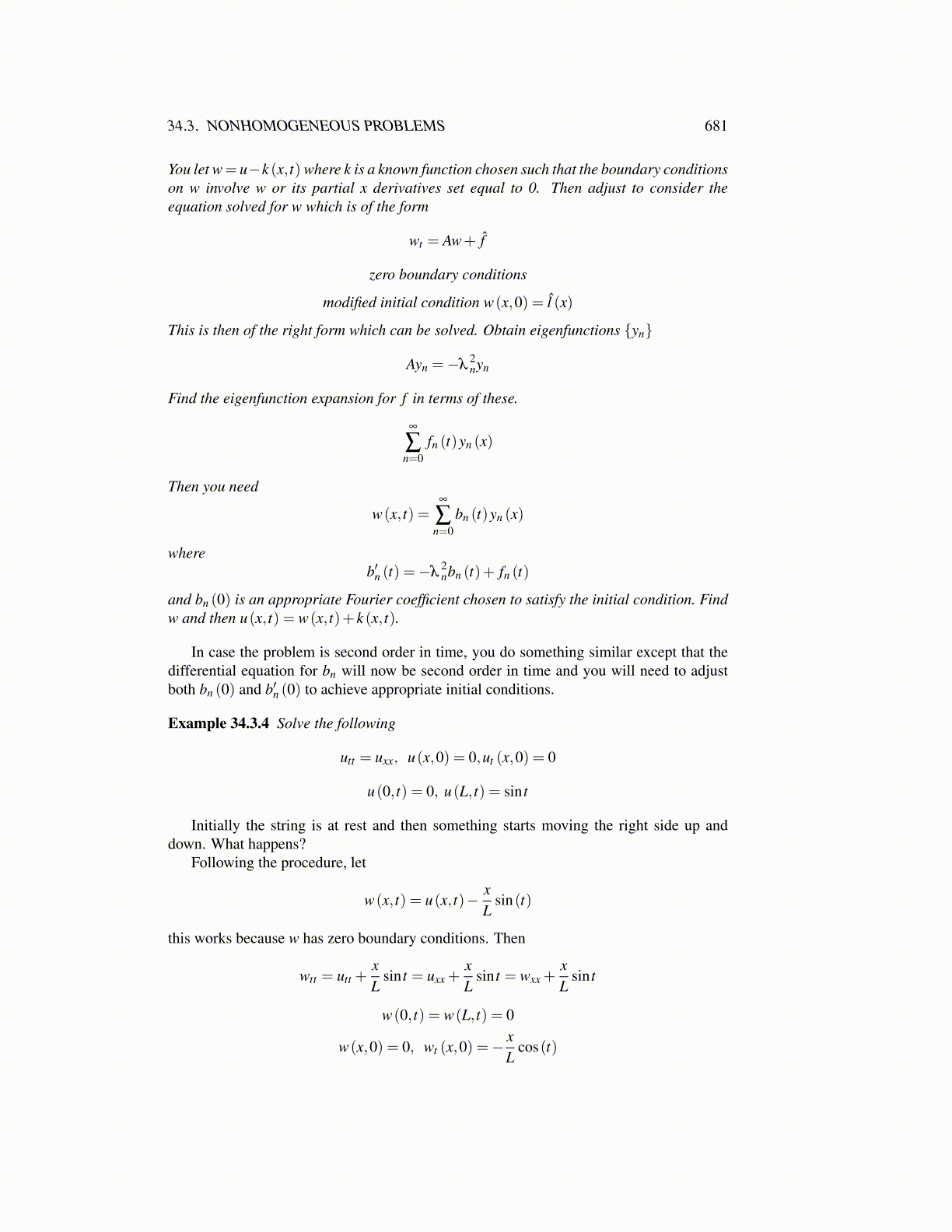
34.3. NONHOMOGENEOUS PROBLEMS 681
You let w= u−k (x, t) where k is a known function chosen such that the boundary conditionson w involve w or its partial x derivatives set equal to 0. Then adjust to consider theequation solved for w which is of the form
wt = Aw+ f̂
zero boundary conditions
modified initial condition w(x,0) = l̂ (x)
This is then of the right form which can be solved. Obtain eigenfunctions {yn}
Ayn =−λ2nyn
Find the eigenfunction expansion for f in terms of these.
∞
∑n=0
fn (t)yn (x)
Then you need
w(x, t) =∞
∑n=0
bn (t)yn (x)
whereb′n (t) =−λ
2nbn (t)+ fn (t)
and bn (0) is an appropriate Fourier coefficient chosen to satisfy the initial condition. Findw and then u(x, t) = w(x, t)+ k (x, t).
In case the problem is second order in time, you do something similar except that thedifferential equation for bn will now be second order in time and you will need to adjustboth bn (0) and b′n (0) to achieve appropriate initial conditions.
Example 34.3.4 Solve the following
utt = uxx, u(x,0) = 0,ut (x,0) = 0
u(0, t) = 0, u(L, t) = sin t
Initially the string is at rest and then something starts moving the right side up anddown. What happens?
Following the procedure, let
w(x, t) = u(x, t)− xL
sin(t)
this works because w has zero boundary conditions. Then
wtt = utt +xL
sin t = uxx +xL
sin t = wxx +xL
sin t
w(0, t) = w(L, t) = 0
w(x,0) = 0, wt (x,0) =−xL
cos(t)